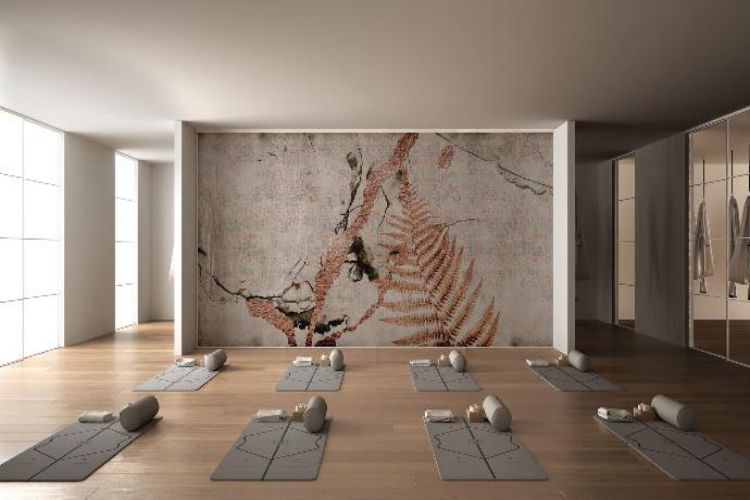Plain walls can make rooms echo and feel empty, while smart design can shape both sound and sight. Modern interiors now use art that does more than please the eyes: it softens noise, balances tone, and creates calm. Textured surfaces and layered fabrics reduce harsh sounds, improving clarity in conversation or music. Each wall becomes a canvas for creativity that also refines acoustics. Simple adjustments can turn dull corners into inviting areas. With thoughtful choices of color, material, and pattern, every space can move from plain to polished harmony.
Sound Goals
Quiet rooms help focus. Clear voices support learning. Fewer echoes create calm. Start by defining the outcome you want from each room. Decide whether you want softer speech or tighter bass. Choose finishes that match your taste while serving the goal. A simple framed acoustic panel can start the transformation without crowding your space. Consider layering materials for deeper absorption or mixing textures for a decorative touch. The result should not only sound pleasant but also fit seamlessly within the room’s overall design language.
Smart Materials
Create a short plan for what you will buy and why. Note thickness, surface texture, and fire rating. Then shortlist options that balance style, budget, and performance.
- Mineral wool reduces reflections across speech bands with reliable absorption values.
- Poly fiber sheets resist moisture while staying light for quick installation tasks.
- Perforated wood faces hide cores while keeping airflow free for absorption.
- Felt tiles soften flutter echoes while offering flexible color layout choices.
When comparing materials, always check for ratings that indicate acoustic performance. A well-chosen mix of dense cores and breathable fabrics ensures better balance between sound control and style.
Panel Styles
Artful sound control can look refined. Fabric-wrapped frames deliver soft lines. Printed canvases double as décor. Slatted fronts echo modern studios with warmth. Modular tiles let you build murals. Sculpted forms add depth that breaks standing waves. Select shapes that work with your furniture and lighting. Try geometric patterns for modern interiors or organic lines for a softer appeal. Each design should invite attention while still feeling natural in the space.
Placement Tips
Read this overview, then match the points to your room shape. Test clap echoes before mounting panels. Use masking tape to preview coverage.
- First reflection spots on side walls deserve priority for clarity during talks.
- A cloud above seating stops flutter bounce between floor and ceiling planes.
- Panels behind speakers reduce rear energy that smears detail during playback.
- Corner traps tame low notes that linger longer than higher content.
Proper placement determines efficiency. Panels too high or too far apart can leave gaps where sound bounces freely. Use symmetry and spacing to ensure even control.
DIY Methods
Before the bullets, know that careful measuring saves time and fixes mistakes later. Cut once after checking square lines with a trusted tool. Wear basic protection for dust or fibers.
- Build simple frames from straight timber with tight joints for sturdy mounting.
- Stretch breathable fabric over cores so air reaches the absorbing surface properly.
- Add hidden cleats on frames that interlock for safe hanging without wobble.
- Seal edges neatly with trim pieces to prevent fraying while keeping a clean look.
Adding creativity to the build makes the process rewarding. You can print artwork onto fabric or apply patterns with paint-safe stencils. The key is to merge practicality with personality.
Color Harmony
Color helps rooms feel balanced. Soft neutrals support reading. Deep hues create cozy zones. Pair cool tones with metal accents for a crisp mood. Pair warm tones with wood for relaxed charm. Use repeating shades to link panels across a larger wall. Maintain one dominant color so art stays cohesive. Blending tones based on light direction enhances perception and depth. Even small color shifts can make sound panels feel like intentional design features rather than acoustic necessities.
Care Routine
Read these notes, then set a reminder for seasonal upkeep tasks. Keep panels tidy for lasting performance over years.
- Dust gently using a soft cloth, which avoids pressing fibers or fabric.
- Spot clean marks using mild soap, then blot dry with patience.
- Check brackets twice yearly to prevent sag from loose fasteners.
- Rotate removable tiles to even wear while refreshing the layout.
Small maintenance steps extend life. Clean surroundings reduce particle buildup that can affect fabric brightness and acoustic response.
Quick Checklist
Short prep helps projects finish smoothly. Map reflections using a mirror test. Mark studs to anchor weight. Measure levels to keep lines true. Photograph progress for reference. Keep offcuts for small spots. Label panels on the back for easy rehang after cleaning. Note product specs for future matching. Record measurements in a notebook so replacements remain consistent across time.
Bright Finish
Rooms feel calmer when echoes fade without losing life. Fresh textures turn plain surfaces into purposeful art that speaks softly while looking refined. Start with one wall, then listen for changes. Add panels in small steps until speech sounds clear. Keep maintenance simple so results stay strong over time with minimal effort from you. Try combining prints and plain surfaces for balanced appeal that feels both stylish and serene. The final touch can mention acoustic panels as friendly helpers that blend style with quiet purpose, reminding you that good sound begins with good design.

